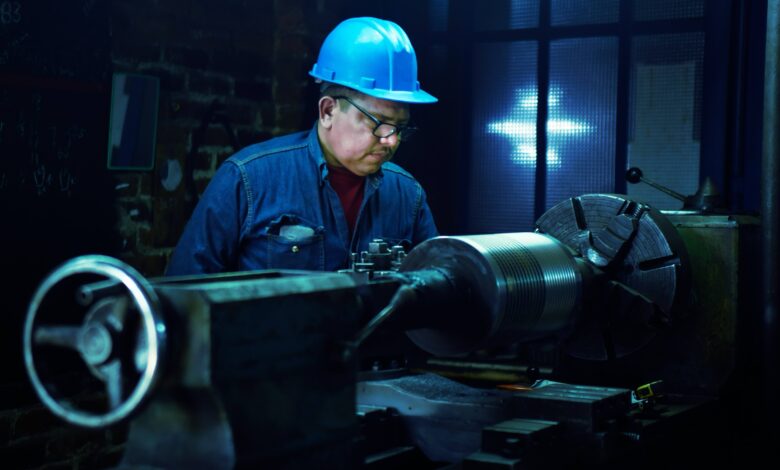
We live in an era defined by AI hype. From chatbots to copilots, headlines proclaim a productivity revolution. Yet, in many of the sectors where productivity gains are most urgently needed and could unlock the greatest real-world value, progress has been far less visible.
This is especially true for the physical industries that power our economies – utilities, manufacturing, energy, infrastructure, construction – key parts of the “real economy”. AI can enhance knowledge work in every sector, yet the public conversation on productivity is dominated by tools built for software developers, data analysts, and digital marketers.
These roles represent only a small fraction of the workforce in physical industries, where the day‑to‑day jobs are procurement, asset management, planning, and operations. Consequently, many of the industries that make up the bulk of global GDP remain stuck, weighed down by ageing infrastructure, disconnected systems, and decades-old workflows.
This is the paradox at the core of today’s AI revolution: the industries with the most to gain from AI are the least able to harness it. If we’re serious about fixing the productivity problem, not just in theory, but in practice, then we need to start where the problems are hardest. That means rethinking how AI is developed, delivered, and deployed: not as generic platforms, but as precision tools tailored to solve specific, operational challenges at speed.
Mind the productivity gap
For all the talk of AI-driven productivity gains, the bigger picture tells a different story. Productivity growth across major economies has slowed dramatically, and the sectors that form the backbone of national economies are bearing the brunt of that stagnation.
Take the UK, for example. Labour productivity growth has averaged just 0.6% per year between 2011 and 2022, a stark contrast to the 2.2% annual average seen between 1971 and 2007. Part of the issue lies in long-term underinvestment: capital input per worker is about one-third below the OECD average, driven by decades of low spending on infrastructure, technology, R&D, and workforce training.
The effects are especially visible in physical industries. The construction sector, for instance, employs 7% of the world’s working-age population, yet remains one of the least digitalised industries globally. Within UK public services, outdated systems alone are estimated to cost £45 billion annually in avoidable inefficiencies.
The tide may be beginning to turn – the government has recently recognised the need for modernisation of key industries, releasing the new Industrial Strategy across eight sectors – the IS-8 – that it judges have the highest potential for economic growth, which includes advanced manufacturing, clean energy, defence, and digital and technology businesses (including artificial intelligence and quantum computing).
These sectors will receive the bulk of government industrial support. However, in many traditional sectors, productivity is held back not by a lack of interest or ambition, but by infrastructure, complexity, and sheer inertia. It’s not uncommon for critical operations to still rely on paper records, manual data entry, and hours of spreadsheet wrangling.
The result is what looks like a systems problem, but is also a people problem: teams wasting time on workarounds, chasing data, and firefighting instead of improving. The promise of AI, especially generative AI, is therefore especially alluring – speed and scale to people and systems, at your fingertips. The problem lies in how that promise can’t solve the messiness of traditional operations.
In these industries, every workflow is different. Each function, from procurement to asset management to compliance, operates under tight regulation, historical constraints, and highly specialised practices. Off-the-shelf software doesn’t cut it, and generic AI tools, however powerful in isolation, struggle to slot into these real-world environments without extensive (and expensive) customisation.
Meanwhile, these organisations typically lack the internal technical firepower – data scientists, development teams, AI engineers – to build tailored solutions from scratch. Hiring external help is slow, costly, and often results in systems that are out of date before they’re fully deployed. So while AI makes headlines in digital-native industries, many of the most critical sectors are stuck in a holding pattern.
Precision beats abstraction
Breaking that cycle means starting not with abstract capabilities, but with specific, grounded business problems. Cadent Gas, which manages the UK’s largest gas distribution network, is a useful example to study. With 2.2 million customers in the East Midlands alone, Cadent handles everything from gas transportation and infrastructure maintenance to regulatory reporting and emergency response.
Their team began by identifying a crucial, manual-heavy process: a £250 million procurement programme that required weeks of spreadsheet analysis just to compare tenders. By building a focused tool to aggregate and analyse this data, Cadent transformed how quickly bids could be reviewed and suppliers engaged – and how clearly they could report costs to regulators. That one tool is now used across all their business regions.
Another example came in gas escape management, which is the system for responding to gas leaks. Cadent held decades of data on incidents, equipment, and vehicle movements, but stored it across disconnected systems. By integrating that data and applying predictive models, the team could now forecast how long it would take to respond to a leak, and what an engineer would need to fix it. Time saved here isn’t just about productivity. It’s about safety.
In both cases, the AI didn’t replace people. It cleared space for them to focus on judgment, relationships, and real decisions. And in both cases, the result was a working system in a matter of weeks, not months or years.
Four lessons from the ground
The good news is, AI use cases within traditional industries are no longer isolated examples. There are more and more early signals of what’s possible when AI is applied with precision to real operational problems.
While the context may differ across industries, the underlying patterns are consistent. There are four lessons here that apply far beyond utilities:
- Generic AI won’t solve specific problems: Foundational industries need AI that reflects how they work, not how tech companies imagine they should.
- The people closest to the work hold the keys: The best AI deployments start not in the IT department, but with the teams who understand where time is lost.
- Human-in-the-loop beats full automation: The most effective systems combine AI agents with deterministic software and human judgment – knowing when to hand off and when to step back.
- Speed is of the essence: Tools that take years to roll out rarely stay relevant. Fast, iterative solutions – built with clear scope and real feedback – win.
Delivering on the promise of AI
When it comes to rolling out AI effectively in these industries, the key risk is paralysis – caused by poor fit, bloated software, and a belief that transformation is too hard. The alternative is already here and proven to work – when AI is built around real problems, grounded in human expertise, and delivered quickly, it unlocks not just efficiency, but belief. In some organisations, it’s been compared to “seeing the iPhone for the first time” – that moment when something just works.
If AI is going to transform our economies, it can’t live in labs or demo videos. It needs to be in the hands of planners, engineers, procurement teams – the people on the ground, doing the work that keeps the country running. That’s where the real revolution begins.





